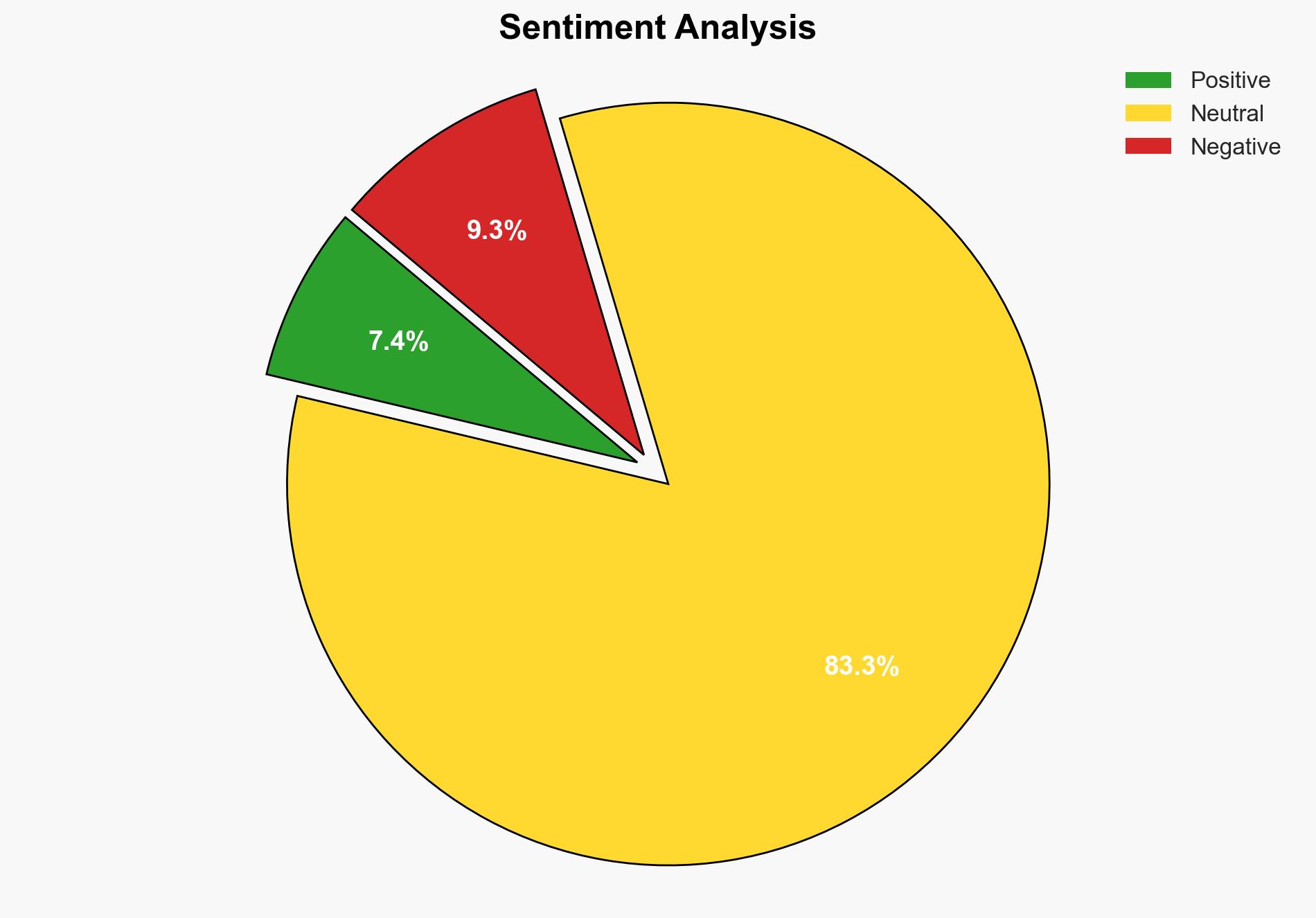Second US Navy Aircraft Carrier Now Heads to Middle East – The National Interest
Published on: 2025-03-28
Intelligence Report: Second US Navy Aircraft Carrier Now Heads to Middle East – The National Interest
1. BLUF (Bottom Line Up Front)
The deployment of a second US Navy aircraft carrier to the Middle East signifies a strategic move to bolster military presence in the region. The USS Harry Truman’s extended deployment and the arrival of the USS Carl Vinson aim to ensure continuous naval operations, highlighting increased focus on regional security dynamics, particularly concerning Iran and its proxies. This deployment underscores the US commitment to maintaining stability and deterring aggression in the Middle East.
2. Detailed Analysis
The following structured analytic techniques have been applied for this analysis:
General Analysis
The deployment of the USS Carl Vinson to the Middle East, overlapping with the USS Harry Truman, reflects a strategic emphasis on maintaining a robust naval presence. This move is likely a response to heightened tensions with Iran and the activities of regional proxies such as the Houthi militant group. The continuous rotation of carriers ensures operational readiness and deterrence capabilities. The recent emergency repair of the USS Harry Truman and the subsequent command change indicate operational challenges that the Navy must address to maintain effectiveness.
3. Implications and Strategic Risks
The increased naval presence in the Middle East poses several strategic implications and risks:
- Potential escalation of tensions with Iran, leading to increased regional instability.
- Strain on naval resources, potentially affecting readiness in other strategic areas such as the Indo-Pacific.
- Economic impacts due to potential disruptions in commercial shipping routes in the Red Sea and Gulf of Aden.
4. Recommendations and Outlook
Recommendations:
- Enhance diplomatic efforts to reduce regional tensions and prevent escalation with Iran.
- Increase logistical support and maintenance capabilities to ensure carrier readiness and operational efficiency.
- Strengthen alliances with regional partners to share the burden of maintaining security and stability.
Outlook:
Best-case scenario: Successful deterrence of aggression leads to a de-escalation of tensions, stabilizing the region.
Worst-case scenario: Escalation of hostilities results in military conflict, disrupting regional stability and global economic interests.
Most likely scenario: Continued naval presence deters significant aggression but maintains a status quo of heightened alert and readiness.
5. Key Individuals and Entities
The report mentions significant individuals and organizations:
- Pete Hegseth
- David Snowden
- Chris Hill
- Peter Suciu
These individuals are associated with the strategic decisions and operational aspects of the carrier deployments.





